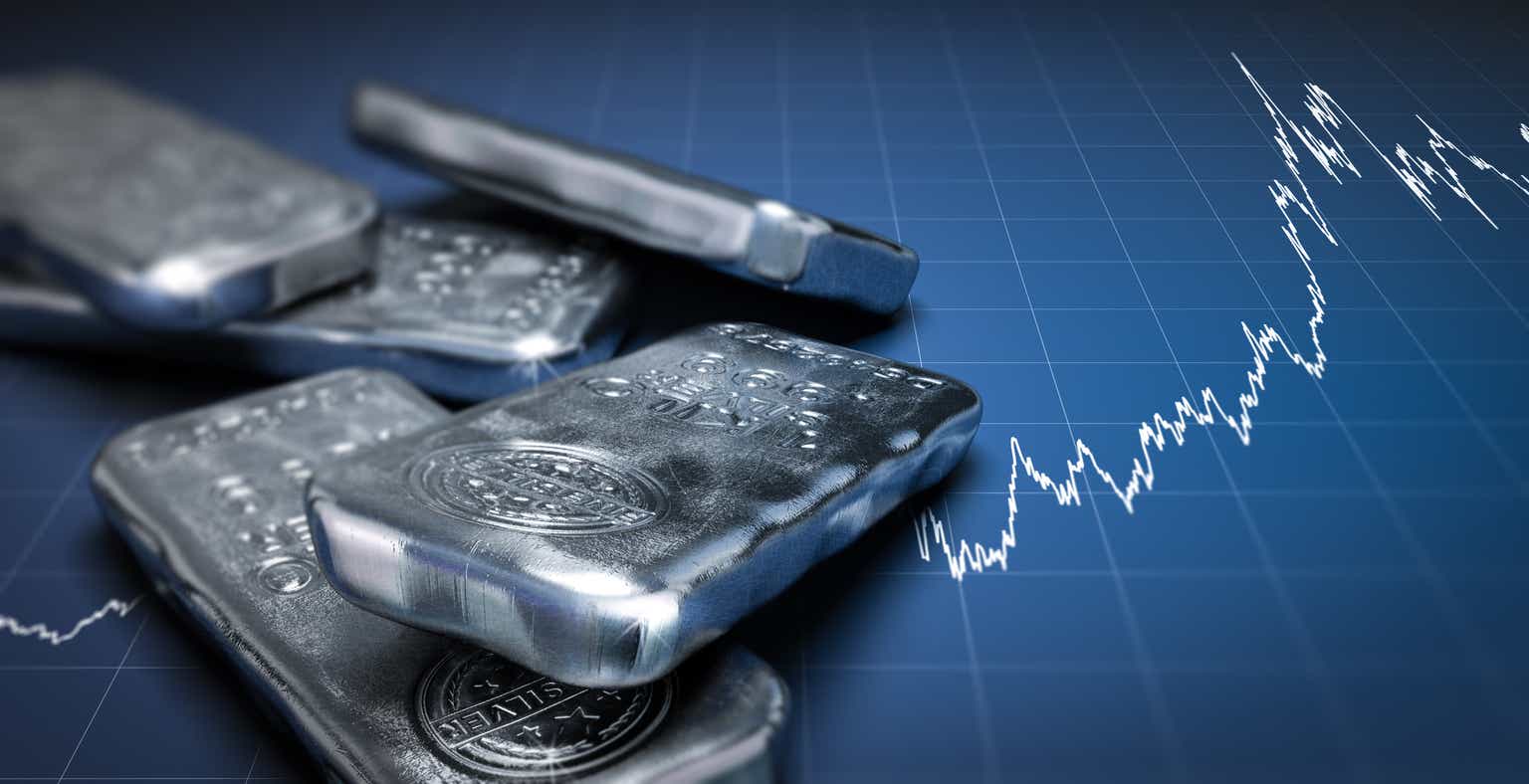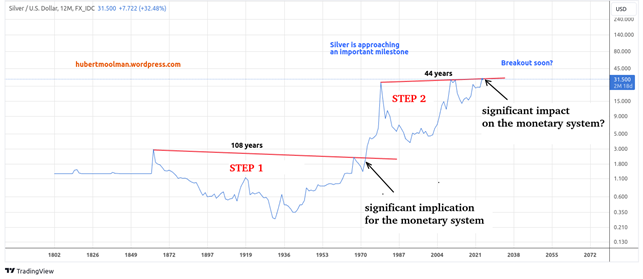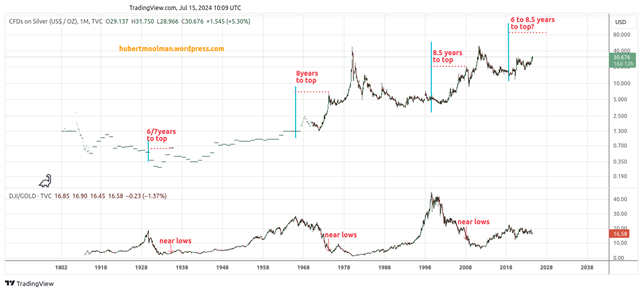
Just like the gold chart, the yearly silver chart appears to be close to going parabolic. Whereas gold is stepping up to monetary dominance, silver is stepping up to monetary restoration.

The yearly chart above also shows how important the current level (around $32) is.
The U.S. dollar silver chart has “steps” that go back to the 1800s. Step 1 is from 1864 high to 1972, and Step 2 is from January 1980 to the current time. These steps differ from those on the gold chart in the linked article above.
At the end of the gold steps around 1933, 1971/2, and 2008, significant events or changes that impacted the financial system (the U.S. dollar) occurred. However, the silver chart only lines up with the gold chart steps when it comes to the 1971/2 events and the current (upcoming) events.
In other words, when a gold step ended around the 1933 and 2008 timeframes, there was no significant step change on the silver chart because silver did not start a new step during those events. A new step roughly translates into higher highs.
This puts special emphasis on the 1971/2 events and potentially on the current (immediate future) events, simply because silver acts as a confirmation of the significance of the relevant events. Confirmation comes when silver breaks out at the red line of Step 2 above.
Furthermore, another relevant cycle (the monetary reform cycle) begins after “peak debt” (interest rate lows), and it severely affects the debt-based monetary system. The last time this happened was in the early 1940s, and that is when the new monetary order (Bretton Woods) was established. We are currently in that monetary reform period since March 2020, when interest rates made an all-time low.
This time, the monetary reform cycle happens to coincide with the gold and silver “step” change (as described above). This increases the likelihood of a major change in the monetary system.
While the change under Bretton Woods was brought about by artificial rules (man-made rules), the current change will be determined or required by the natural order of things.
If one has thirst, then drinking water is the best solution. If one is debt-averse, then there is a preference to exchange value for value (barter), not promises. The world will surely be debt-averse after this debt collapse, so people are more likely to revert to a sophisticated type of barter system.
Given that gold and silver are at the top of the value preference (due to their natural properties) when it comes to barter, people are likely to naturally revert to gold and silver as a monetary asset. This is how silver will be restored to being generally accepted as money.
Any artificial monetary rules or system will likely fail quickly this time. For example, if BRICS sets up a new monetary system that is contrary to the natural order of things (like making oil or some other non-monetary asset act as money), it is unlikely to be accepted by the market.
That type of system will fail quickly this time (it won’t take 50 years like the petrodollar), and they will have lost an opportunity. So, really, any new system that is likely to succeed has to be gold and silver based, in my opinion.
Higher prices are the beginnings of restoration. This chart (below) shows that silver is at the beginning of a multi-year rally.

Shared by Golden State Mint on GoldenStateMint.com

















